Australian Tropical Rainforest Plants - Online edition
Sterculia quadrifida R.Br.
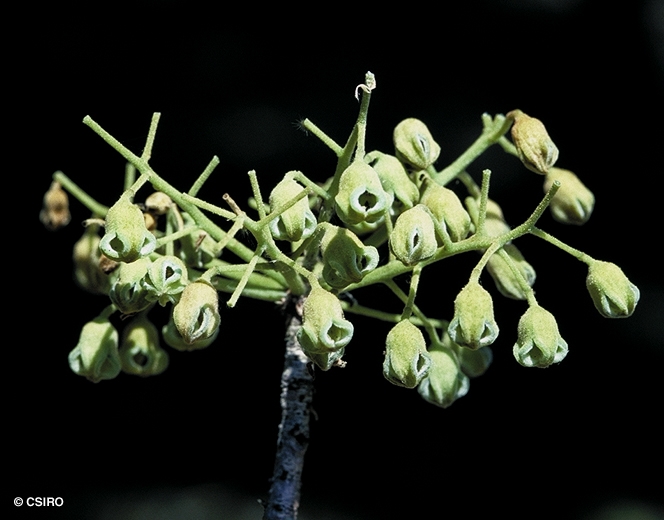
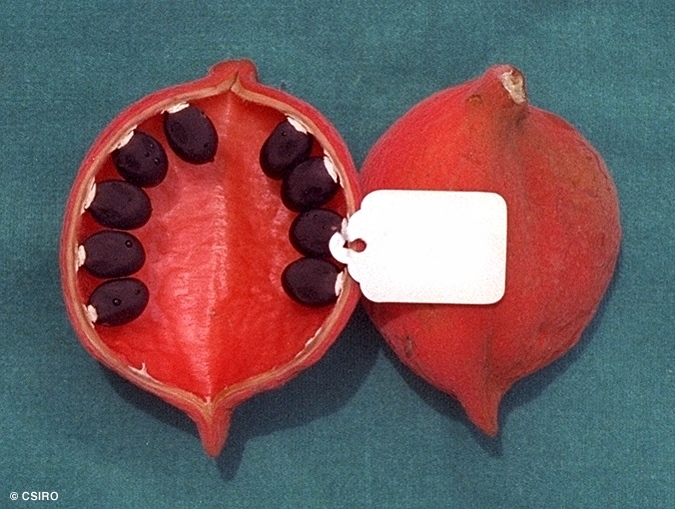
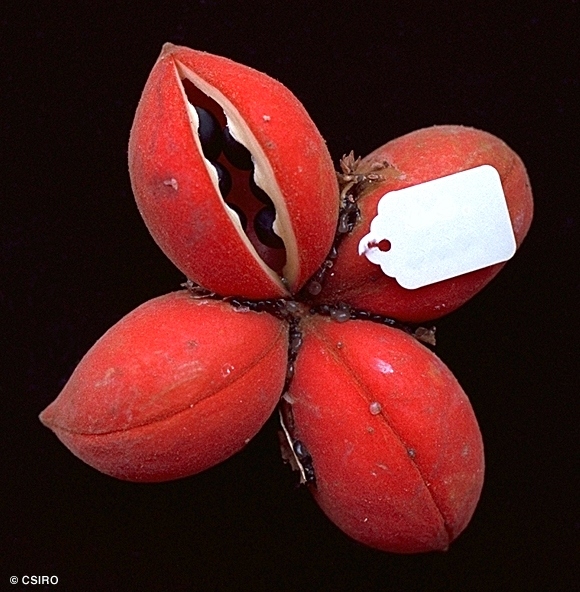
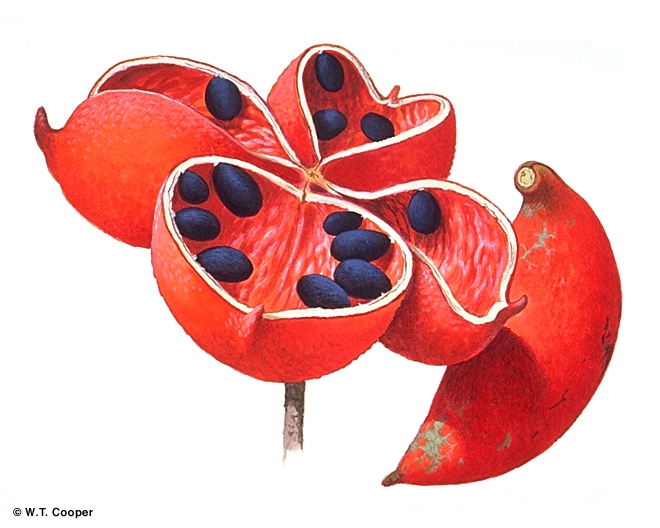
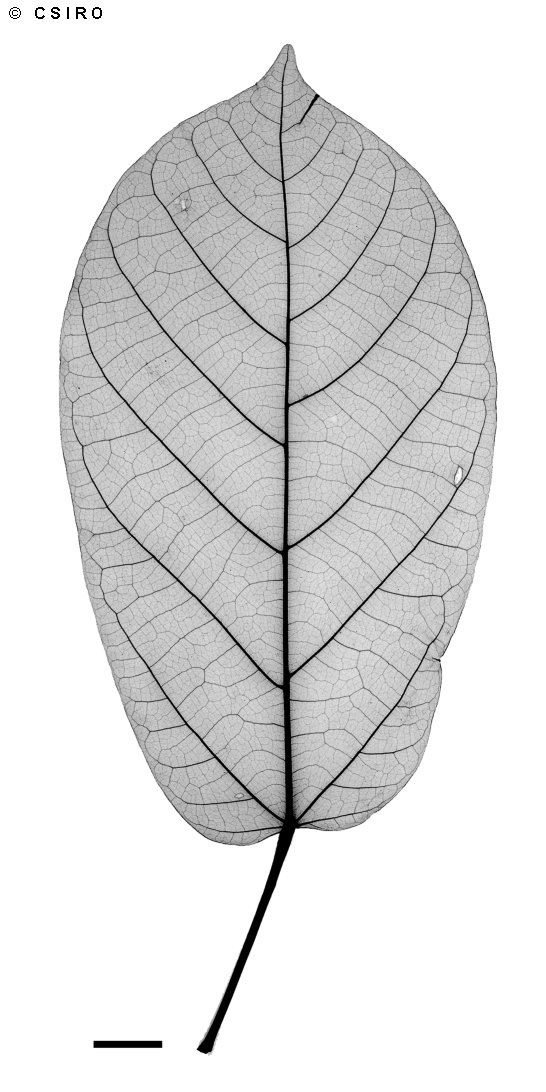
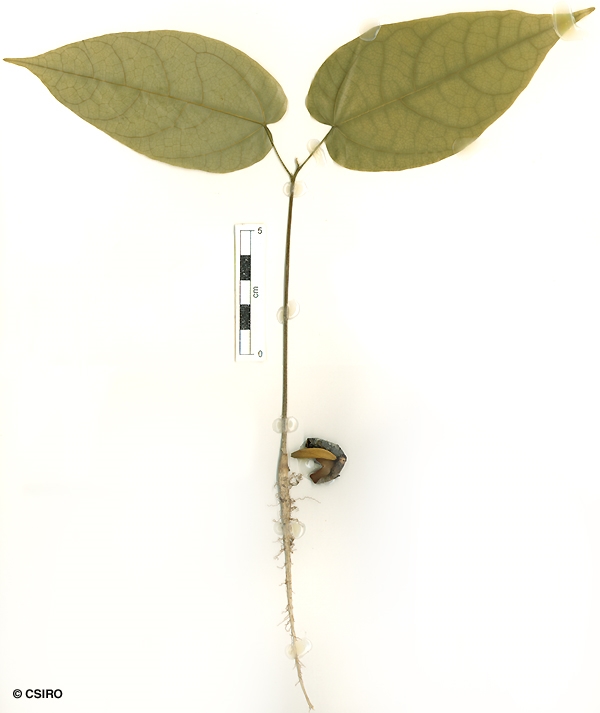

Brown, R. (1844) Plantae Javanicae Rariores : 233. Type: Iter Australiense 1802 - 1805, R. Brown; holo: K.
Orange Fruited Sterculia; Kuman; Kurrajong; Kurrajong, Orange Fruited; Kurrajong, Smooth-seeded; Kurrajong, Red Fruited; Orange Fruited Kurrajong; Peanut Tree; Red Fruited Kurrajong; Scarlet-fruited Kurrajong; Small-flowered Kurrajong; Smooth-seeded Kurrajong; White Crowsfoot; Native Peanut; Koralba
Deciduous; leafless for a period in July or August.
Inflorescence about 4-10 cm long, densely stellate hairy. Pedicels about 5-9 mm long. Flowers densely stellate hairy, perianth tube campanulate or urceolate-campanulate, about 2.5-5 mm long, inner surface pubescent or glabrous, lobes 3-4 mm long, apices cohering. Anthers about 11-17, crowded into a globular head.
Cotyledons about 18-20 mm long, margin revolute. First pair of leaves ovate to narrowly cordate, apex acuminate, margins entire. Stipules linear, about 4-5 mm long, hairy. At the tenth leaf stage: leaf blade ovate or narrowly cordate, apex acuminate, base cordate, glabrous, about 5-7 main lateral veins each side of the midrib; stipules narrowly or linearly triangular. Seed germination time 11 to 25 days.
An interesting tree cultivated for its bright red boat-shaped fruits with black seeds. Trees are usually leafless while in fruit and flowering occurs just before the new leaves appear. Seeds are edible.
Aborigines in northern Queensland crushed leaves of this species and applied then to wounds. An infusion of the bark was applied or juice wrung from the inner bark was applied directly to the eyes. Cribb (1981).





